Iodine Speciation, Transportation, and Transformation in Soils: A Critical Review
-
摘要:
查明土壤中碘的赋存形态及土壤中碘的迁移转化规律,对于评估碘的生物地球化学行为以及预防人类碘缺乏病具有重要意义。本文基于前人研究,阐述了土壤中碘的来源,并总结了土壤中碘的含量、形态及其影响因素。大气的干湿沉降、土壤母质岩石的风化作用以及植物的吸收与释放是土壤中碘的主要来源。国内外土壤中碘的平均含量约为1~5mg/kg,且主要以有机碘形态存在,有机质则是影响土壤中碘的含量及形态变化的重要因素。吸附是土壤碘迁移转化的主要过程。酸性条件下土壤矿物表面的羟基基团以质子化形式存在,有利于对碘的吸附。由于土壤中成分复杂,建立一个完整的土壤碘数据库是探究土壤碘有关方面的基础;需要进一步寻求更优的土壤碘的分析方法;研究土壤对碘的吸附作用机理以及有机质与微生物对土壤中碘的产生的作用机理也是未来研究的重要方向。
要点(1) 土壤深度越深,有机质含量越低,土壤中碘的含量越少。
(2) 微生物可以将无机碘转化为有机碘。
(3) 吸附是土壤中碘的主要迁移转化过程。
HIGHLIGHTS(1) The deeper the soil, the lower the organic matter content and the less iodine in the soil.
(2) Microorganisms can convert inorganic iodine into organic iodine.
(3) Adsorption is the main transportation and transformation mechanism of iodine in soil.
Abstract:BACKGROUNDIdentifying the occurrence form of iodine in soil and the law of iodine migration and transformation in soil is of great significance for evaluating the biogeochemical behavior of iodine and preventing human iodine deficiency diseases.
OBJECTIVESTo review the source, content, speciation, transportation, and transformation of iodine in soils; and briefly summarize the transportation of iodine between soil and plants.
METHODSThe source, content, speciation, transportation, and transformation characteristics of iodine in soils were reviewed. The influences of soil types, environmental factors, organic matter, microbial activity, pH, and Eh on iodine dynamics were summarized. Great emphasis was laid on the main factors affecting the sorption of iodine in soil, which is the key process regulating soil iodine mobility and bioavailability.
RESULTSThe dry and wet deposition of the atmosphere, the weathering of the soil parent rock, and the absorption and release of plants are the main sources of iodine in soil. Iodine contents in soil typically range from 1 to 5mg/kg. Organic iodine is the dominant form of iodine in soil due to the close association of iodine with organic matter, which is the critical factor affecting soil iodine dynamics. Sorption is the key process regulating soil iodine mobility and bioavailability. Under acidic conditions, hydroxyl groups on soil mineral surface are protonated, and thus facilitating iodine sorption via electrostatic interaction.
CONCLUSIONSDue to the complex composition of soil, establishing a complete soil iodine database is the basis for exploring soil iodine related aspects. It is necessary to further seek better soil iodine analysis methods. Studying the adsorption mechanism of soil iodine and the effect of organic matter and microorganisms on iodine in soil are also an important direction for future research.
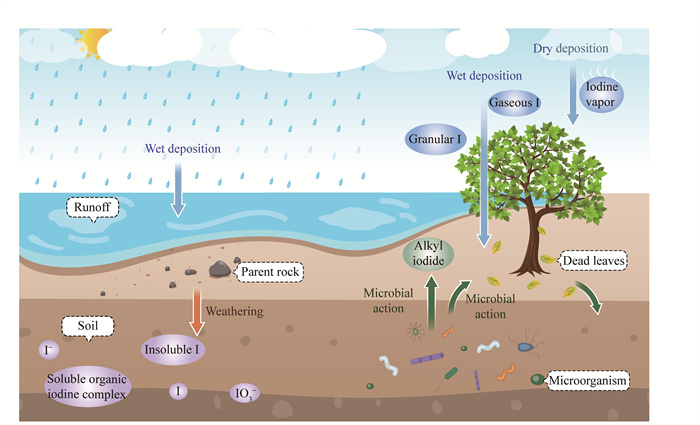
-
Keywords:
- iodine /
- soil /
- speciation /
- transportation and transformation
-
一百多年前Alfred Elis Törnebohm在其发表的论文中第一次采用“矽卡岩(grönskarn)”一词,用以描述Norborg铁矿中的辉石-石榴石岩[1]。从此之后地质学者们对矽卡岩型矿床中含矿岩石的矿物成分、共生组合、交代关系等方面进行了系统研究,并以此探讨成矿作用过程中成矿流体物理、化学环境的变化,从而了解矿床的形成原因和形成过程[2-4]。譬如辉石、绿泥石,以及石榴石的生长环带可以有效地保存其形成时热液流体的性质和组成信息,有助于了解热液流体的演化过程[5],并指示矿床金属矿化的类型[6-7]。这些研究极大地促进了对于矽卡岩矿床形成过程的认识。
中国矽卡岩型矿床所包含的矿种丰富,常见矽卡岩型Cu、Fe、Pb、Zn、W、Sn等矿床。这一类型的矿床在中国的分布展现出“东多西少”的局面,但近些年来随着找矿勘探工作投入的增加,在中国西部地区也接连发现和探明了一大批矽卡岩型矿床[8],仅在天山及其邻区就发现了赛博、查岗诺尔、备战等多处矽卡岩型矿床。根据相关统计,中国已探明的矽卡岩型矿床合计918处,其中有207处是矽卡岩型铜矿[8],约占总数的22.5%,其探明储量约占中国铜矿总储量的27%[9]。作为中国天山地区重要的金属矿床类型,对新发现的矽卡岩型矿床进行矿物学方面的研究,对于深化这一地区矽卡岩矿床成矿过程的认识具有积极意义,能够对南天山地区矽卡岩矿床的找矿工作提供帮助。
阿合塔拉铜矿位于塔里木板块以北的南天山缝合带。铜矿矿体形成于碳酸盐岩与岩浆岩的接触带。前人对该矿床矽卡岩矿物石榴石进行了较为详细的研究[10],而目前对该矿床中其他矽卡岩矿物的矿物学特征还缺乏分析与研究。因此,本文将阿合塔拉铜矿床中典型的矽卡岩矿物作为研究对象,将宏观矿床尺度野外地质考察与微观矿物尺度显微镜观察,以及地球化学尺度电子探针分析相结合,开展了系统、综合的研究。对该矿床的形成原因、成矿环境,以及成矿过程进行了深入详细探讨,拟为下一步找矿勘探工作提供数据资料和科学依据。
1. 矿床地质背景
矿区范围内可见出露托什罕组第二段(D2t2)的地层,主要分布在矿区西北和西南部地区,为一套生物碎屑灰岩。托什罕组第四段(D2t-mb)的地层主要分布在矿区中部与岩浆岩发生接触,与成矿密切相关,为一套大理岩。乌恰组第一段(N2w1)的地层主要分布在矿区西部,为一套中-粗砾岩。乌恰组第二段(N2w2)的地层主要分布在矿区东北部,为一套粉砂质泥岩和泥质粉砂岩。矿区内乌恰组与托什罕组共同组成一个单斜构造,倾向南东,产状较缓。矿区内断裂构造发育,主要发育了若干条北北东向的断层。矿区内与成矿相关的岩浆岩为花岗闪长岩岩体(图 1)[10]。
2. 实验部分
2.1 样品采集及处理
本文研究的样品全部采集于矿区内侵入岩与大理岩的接触部位,包括石榴石矽卡岩、石榴石-辉石矽卡岩、石榴石-绿帘石矽卡岩等。在先后进行野外实地勘查、手标本观察和室内电子显微镜观察后,选取有研究意义的新鲜样品,对其中的矽卡岩矿物进行电子探针成分分析。选取辉石样品5件,编号分别为AHTL-005、AHTL-012D、AHTL-B5、AHTL-B5B、AHTL-B6;硅灰石样品5件,编号分别为AHTL-Wo1至AHTL-Wo5;绿泥石样品5件,编号分别为AHTL-Chl1至AHTL-Chl5;绿帘石样品5件,编号分别为AHTL-Ep1至AHTL-Ep5。
2.2 样品分析测试
电子探针分析使用中国地质大学(北京)科学研究院电子探针实验室EPMA-1600型电子探针仪,使用的标样为美国SPI公司提供的天然矿物标样,实验电压为15kV,束斑直径为1μm,依据ZAF法进行修正。
3. 矽卡岩样品电子探针分析结果
阿合塔拉铜矿中的矽卡岩矿物主要包括石榴石、辉石、硅灰石、绿泥石、绿帘石,根据矽卡岩矿物的生成顺序,其矿物学特征和电子探针数据分析如下。
3.1 石榴石
在采集到的石榴石-辉石矽卡岩手标本中,石榴石晶体较小显黄绿色(图 2a)。在石榴石-磁铁矿矽卡岩手标本中,石榴石晶体较大显褐红色(图 2b)。经过光学显微镜观察,石榴石-辉石矽卡岩中的石榴石呈无色,他形粒状,与无水硅酸盐矿物(透辉石、硅灰石)共生,未见金属矿物(图 2中c~d);石榴石-磁铁矿矽卡岩中的石榴石呈棕黄色,自形六边形(图 2e),可见其颗粒间或生长环带中常包裹或充填黄铁矿、磁铁矿等(图 2中f~i)。根据石榴石与硅酸盐矿物和金属矿物的共-伴生关系可以看出,石榴石的形成明显分为两个不同的阶段。石榴石-辉石矽卡岩中石榴石的形成时间较早,石榴石-磁铁矿矽卡岩中石榴石的形成时间较晚,并且只有后期形成的石榴石能够见到清晰的结晶环带[10](图 2中e~h)。
本文作者在前期工作中已将石榴石-辉石矽卡岩中的早期石榴石,以及石榴石-磁铁矿矽卡岩中的晚期石榴石进行了电子探针分析,数据证实其分别为钙铝(Gro58.24~74.61)-钙铁(And22.60~38.50)榴石系列和钙铁(And52.90~98.79)-钙铝(Gro0.23~44.66)榴石系列[10]。矿床中的石榴石存在着从钙铝榴石系列向几乎纯净的钙铁榴石系列演化的趋势,表明石榴石在演化过程中,铁质在不断增加。
3.2 辉石
石榴石-辉石矽卡岩样品中的辉石显绿色或浅绿色(图 3a)。在单偏光镜下观察,辉石显淡绿色(图 2c),呈柱状半自形结构,正高凸起。在正交偏光镜下观察,其干涉色能够达到二级蓝绿(图 2d)。
在辉石的电子探针分析测试结果中(表 1),SiO2含量介于50.66%~53.75%,平均值为52.12%;CaO含量介于22.30%~25.49%,平均值为24.22%;MgO含量介于12.74%~17.31%,平均值为14.68%;TFeO含量介于3.60%~8.77%,平均值为6.10%。Mn/Fe值介于0.00~0.12之间。透辉石端元组分介于77.74%~95.46%,表明阿合塔拉铜矿中的辉石几乎为纯净的透辉石系列。端元组分图解中实验数据全部落入透辉石区域(图 4),并与全球典型矽卡岩型铜矿床中的辉石相一致。
表 1 辉石电子探针分析数据Table 1. Electron probe microanalysis data of pyroxene组分 含量(wB/%) AHTL-005 AHTL-012D AHTL-B5 AHTL-B5B AHTL-B6 SiO2 50.66 52.36 51.98 51.85 53.75 TiO2 0.64 - 0.21 0.13 0.18 Al2O3 2.83 2.75 0.23 0.49 0.03 Cr2O3 0.25 0.14 0.11 - 0.07 TFeO 5.76 3.94 8.45 8.77 3.60 MnO 0.32 - 0.89 0.50 0.43 MgO 14.67 17.31 12.87 12.74 15.81 CaO 23.88 22.30 24.77 24.67 25.49 Na2O 0.68 0.10 0.27 0.27 0.15 K2O - 0.29 - - 0.01 Σ 99.69 99.19 99.78 99.42 99.52 以6个氧原子为基准计算的阳离子数 Si 1.89 1.93 1.97 1.97 1.99 AlⅣ 0.11 0.07 0.01 0.00 0.01 AlⅥ 0.01 0.05 0.00 0.00 0.00 Ti 0.02 0.00 0.01 0.00 0.01 Cr 0.01 0.00 0.00 0.00 0.00 Fe3+ 0.15 0.06 0.09 0.09 0.04 Fe2+ 0.03 0.06 0.17 0.19 0.07 Mn 0.01 0.00 0.03 0.02 0.01 Mg 0.82 0.95 0.73 0.72 0.87 Ca 0.95 0.88 1.00 1.00 1.01 Na 0.05 0.01 0.02 0.02 0.01 K 0.00 0.01 0.00 0.00 0.00 端元组分(%) Wo 47.56 44.94 49.13 49.27 50.08 En 40.65 48.53 35.52 35.40 43.22 Fs 9.35 6.16 14.38 14.36 6.17 Di 95.46 94.42 78.26 77.74 90.79 Hd 3.35 5.58 18.66 20.53 7.81 Jo 1.18 0.00 3.07 1.73 1.40 注:端元组分由Geokit软件计算得出,“-”表示实验结果未达到检测线。Wo—硅灰石;En—顽火辉石;Fs—斜方铁辉石;Di—透辉石;Hd—钙铁辉石;Jo—锰钙辉石。 3.3 硅灰石
硅灰石属于单链结构的无水硅酸盐矿物。阿合塔拉铜矿中的硅灰石,其粒径普遍小于0.5mm,呈片状。在电子探针背散射图像中可以看出硅灰石与石榴石、透辉石间的接触边较为平滑,是典型的共生关系(图 3c),同时可见硅灰石又被后期形成的斑铜矿所交代(图 3d)。
硅灰石的电子探针实验数据中,SiO2含量介于50.22%~50.98%,平均值为50.54%;CaO含量介于48.57%~49.03%,平均值为48.81%。端元组分Wo介于90.04%~99.37%(表 2)。
表 2 硅灰石电子探针分析数据Table 2. Electron probe microanalysis data of wollastonite组分 含量(wB/%) AHTL-Wo1 AHTL-Wo2 AHTL-Wo3 AHTL-Wo4 AHTL-Wo5 SiO2 50.22 50.48 50.98 50.59 50.42 TiO2 0.17 0.20 0.06 0.02 0.16 Al2O3 0.05 0.03 - 0.01 - Cr2O3 0.14 0.13 0.18 0.24 0.14 TFeO - 0.03 - - 0.06 MnO 0.01 0.06 - - - MgO - 0.12 - 0.04 - CaO 48.92 48.57 48.60 48.95 49.03 Na2O 0.23 0.13 0.26 0.14 0.15 K2O - - - - - Σ 99.74 99.75 100.08 99.99 99.96 以6个氧原子为基准计算的阳离子数 Si 1.96 1.97 1.98 1.97 1.96 AlⅣ 0.01 0.01 0.00 0.00 0.00 AlⅥ 0.00 0.00 0.00 0.00 0.00 Ti 0.01 0.01 0.00 0.00 0.00 Cr 0.00 0.00 0.01 0.01 0.00 Fe3+ 0.11 0.08 0.08 0.09 0.10 Fe2+ 0.00 0.00 0.00 0.00 0.00 Mn 0.00 0.00 0.00 0.00 0.00 Mg 0.00 0.01 0.00 0.00 0.00 Ca 2.05 2.03 2.02 2.04 2.05 Na 0.02 0.01 0.02 0.01 0.01 K 0.00 0.00 0.00 0.00 0.00 端元组分(%) Wo 99.14 99.04 99.04 99.37 99.36 En 0.00 0.34 0.00 0.11 0.00 Fs 0.02 0.14 0.00 0.00 0.09 Ac 0.84 0.48 0.96 0.51 0.55 注:端元组分由Geokit软件计算得出,“-”表示实验结果未达到检测线。Wo—硅灰石;En—顽火辉石;Fs—斜方铁辉石; Ac—阳起石。 3.4 绿泥石
矽卡岩样品中绿泥石的颜色显示为淡绿色,呈他形粒状结构。在显微镜单偏光下呈橄榄绿色,突起较低,为不规则的鳞片状,多产出在石榴石的边部和裂隙之间并对其进行交代(图 3中e~f),表明其形成时间应该晚于石榴石。
在绿泥石的电子探针分析数据中,其SiO2含量介于25.36%~26.39%,平均值为25.85%;Al2O3含量介于19.63%~20.14%,平均值为19.93%;TFeO含量介于24.34%~27.80%,平均值为26.86%;MgO含量介于13.05%~15.91%,平均值为13.83%(表 3)。
表 3 绿泥石电子探针分析数据Table 3. Electron probe microanalysis data of chlorite组分 含量(w/%) AHTL-Chl1 AHTL-Chl2 AHTL-Chl3 AHTL-Chl4 AHTL-Chl5 SiO2 26.39 26.06 25.82 25.62 25.36 Al2O3 19.63 19.96 20.00 20.14 19.93 Cr2O3 0.37 0.23 0.28 0.08 0.05 TFeO 24.34 26.99 27.80 27.60 27.55 MnO 0.20 0.35 0.37 0.36 0.41 MgO 15.91 13.62 13.43 13.16 13.05 P2O5 0.07 0.07 0.14 0.02 0.18 CaO 0.06 0.05 0.11 0.07 0.13 Na2O 0.41 0.37 0.30 0.26 0.23 Σ 87.54 87.93 88.26 87.64 87.07 3.5 绿帘石
阿合塔拉铜矿中的绿帘石在光学显微镜下呈浅黄绿色,突起较高,颜色分布不均,有着较弱的多色性,呈不规则的粒状产出。在电子探针背散射图像中可见绿帘石交代透辉石(图 3g)、黄铜矿交代绿帘石的现象(图 3中h~i)。表明其形成时间应该在早期无水硅酸岩矿物形成之后,并在铁铜硫化物形成之前,属于晚期矽卡岩阶段(退化蚀变阶段)的产物。
阿合塔拉铜矿中的绿帘石电子探针分析结果(表 4)显示,SiO2含量介于37.69%~38.14%,平均值为37.92%;CaO含量介于22.58%~23.32%,平均值为22.96%;Al2O3含量介于18.07%~18.57%,平均值为18.33%;TFeO含量介于16.46%~17.16%,平均值为16.83%。
表 4 绿帘石电子探针分析数据Table 4. Electron probe microanalysis data of epidote组分 含量(w/%) AHTL-Ep1 AHTL-Ep2 AHTL-Ep3 AHTL-Ep4 AHTL-Ep5 Si2O 37.87 38.05 37.84 37.69 38.14 TiO2 - 0.13 - - 0.07 Al2O3 18.42 18.28 18.07 18.57 18.31 Cr2O3 0.17 - 0.07 0.11 0.03 TFeO 17.14 16.46 17.16 16.84 16.57 MnO 0.26 0.12 0.11 0.43 0.11 MgO - - 0.08 - 0.02 CaO 22.58 23.32 23.15 22.62 23.14 Na2O 0.12 0.10 0.07 0.05 0.09 K2O - 0.03 0.02 0.03 - Σ 96.56 96.49 96.57 96.34 96.48 注:“-”表示实验结果未达到检测线。 4. 矿床成因和成矿过程分析
4.1 矿床的成因类型
目前普遍将矽卡岩分为两类:一类是将经历了区域或者接触等变质作用后形成的矽卡岩称为变质矽卡岩; 另一类是将经历了各种交代作用形成的矽卡岩称为交代矽卡岩[12]。通常又将交代矽卡岩根据其围岩属于钙质或者镁质碳酸盐岩,再细分为钙矽卡岩或者镁矽卡岩。此外,也有学者曾提出锰质和碱质矽卡岩的概念[13-14]。
显微镜下可见阿合塔拉铜矿矽卡岩矿物、金属矿物发育典型的交代结构。多见含水硅酸盐矿物交代无水硅酸盐矿物,如绿帘石交代透辉石(图 3g)、绿泥石交代石榴石(图 3中e~f),以及斑铜矿、黄铜矿等铁、铜硫化物矿物交代早期硅酸盐矿物(图 3中d,h~i)后造成的交代残余现象。表明阿合塔拉铜矿属于典型的交代矽卡岩型矿床。
此外,阿合塔拉铜矿的围岩是钙质碳酸盐岩大理岩,矿体主要呈层状产出(图 1),具备典型钙矽卡岩型矿床的特征[15]。矽卡岩矿物组合以钙铝榴石、钙铁榴石、透辉石为主,其次为硅灰石、绿帘石、绿泥石等。这样的矿物组合,依照Einaudi等[12]对于矽卡岩的分类标准,同样属于交代矽卡岩中经典的钙矽卡岩类型。
4.2 矽卡岩矿物对矿化的指示
在矽卡岩型矿床中,矽卡岩化的过程就伴随着矿化过程,两者在时间和空间上有着密切的联系[13]。对于典型矽卡岩矿物的研究,能够帮助我们了解矽卡岩型矿床的形成与演化,同时指导针对不同矿化类型的矽卡岩型矿床进行找矿勘查工作[16]。
矽卡岩型矿床中成矿流体的酸碱度可以利用石榴石的成分变化进行反演,并指示其矿化类型[17]。有学者对全球不同矿种矽卡岩矿床中的石榴石成分进行了梳理与对比,认为钙铁-钙铝榴石系列主要与铜矿化相关[2],这与阿合塔拉铜矿中石榴石电子探针分析结果相一致。此外,分析辉石中锰-铁比值的方法也可以指示矽卡岩型矿床金属矿化的种类[18]。对于矽卡岩型铜、铁矿床而言,辉石的锰-铁比值普遍小于0.1[18]。在阿合塔拉铜矿的辉石数据中,有四件样品的锰-铁比值小于0.1,一件样品的锰-铁比值为0.12,这表明阿合塔拉铜矿具备铜(铁)矿化的条件。
阿合塔拉铜矿绿泥石中氧化钠、氧化钾、氧化钙的质量分数之和小于0.5%,表明其在形成过程中不存在混染现象[19],并且阿合塔拉铜矿中的绿泥石全部属于铁绿泥石。Inoue[20]曾指出成矿流体的沸腾作用可能伴随着绿泥石的生成,成矿流体的沸腾作用还能够打破铜在成矿热液中的稳定状态,降低其溶解度,促进铜矿的成矿作用[21-22]。
4.3 矽卡岩成矿过程的探讨
对矽卡岩矿物的化学成分、结构构造、共生和交代关系的研究,有助于划分矿床的成矿阶段,并且指示矽卡岩成矿系统的氧化、还原状态[12]。阿合塔拉铜矿的成矿阶段主要经历了早期矽卡岩阶段、晚期矽卡岩(退化蚀变)阶段、氧化物阶段和早期硫化物阶段。
(1) 早期矽卡岩阶段
阿合塔拉铜矿的花岗闪长岩岩浆,从地下携带大量热量上涌侵位,与大理岩发生接触,并在接触带范围内开始了交代作用。随着交代作用的不断进行,热液流体中产生并汇聚了大量高温气液。这一阶段成矿热液的温度很高,环境中的水解作用极弱,铝、铁、钙、镁等离子主要融入硅酸盐矿物的晶格,共同形成无水硅酸盐矿物,故将这一阶段称为干矽卡岩阶段(这一阶段并没有发生矿化)。
有的学者认为在早期矽卡岩阶段,钙铝榴石形成于酸性、弱氧化且氧逸度较低的环境,而钙铁榴石多形成于碱性溶液中[23]。梁祥济等[24]通过实验分析得出:钙铝榴石一般在中-酸性溶液的弱氧化-弱还原条件下,当温度达到550~700℃时形成;而钙铁榴石一般在偏碱性溶液的氧化-弱氧化环境下,当温度达到450~600℃时形成。阿合塔拉铜矿中的石榴石明显具有从钙铝榴石向钙铁榴石转化的趋势,反映出在早期矽卡岩阶段,其成矿流体由中-酸性向碱性、由弱还原-弱氧化环境向弱氧化-氧化环境转变,并且温度有所降低。
同时,在成矿流体亚稳定的情况下,阿合塔拉铜矿形成了具有特殊结晶环带的晚期石榴石晶体,其环带记录了当时成矿热液亚稳定条件下的演化过程[25-26],铁质含量由内向外逐渐波动增长[10]。证明晚期石榴石生长时的成矿环境并不是一个稳定且封闭的独立环境,此时成矿热液的碱性、氧逸度和铁质含量仍有波动,并且在不断升高[10, 27]。
(2) 晚期矽卡岩阶段
随着交代作用的继续进行,成矿流体的温度进一步下降,并聚集了二氧化碳、硫化氢以及氟等大量挥发份[28-29]。同时,由于流体中氧逸度的升高从而导致在这一阶段形成了大量的绿帘石、绿泥石等含水硅酸盐矿物[30-31]。Inoue[20]认为绿泥石富Fe证明其形成于相对还原的环境中,而绿泥石富Mg则形成于低氧逸度和低pH值的环境。阿合塔拉铜矿中绿泥石Fe/(Fe+Mg)值介于0.46~0.54,平均值为0.52,指示其可能形成于弱氧化-弱还原的过渡环境中。在此阶段石榴石、透辉石等早期矽卡岩矿物开始被绿帘石、绿泥石等退化蚀变矿物所交代(图 3中e~g)。因为这些含有氢氧根的矿物大量生成,也将这一阶段称为湿矽卡岩阶段。
大量的研究表明,铁元素主要通过络合物的形式被运移。随着绿帘石、绿泥石等含氢氧根的退化蚀变矿物不断形成,消耗了热液中大量的氢离子,从而导致溶液更加偏向碱性。正是在这种高氧逸度的碱性条件下,铁的络合物在水解之后,除了少量继续参与形成矽卡岩矿物之外,其他大量形成磁铁矿,所以这一阶段也称为磁铁矿阶段[27, 32]。这也与阿合塔拉铜矿晚期石榴石中常包裹磁铁矿产出的现象相吻合。随着磁铁矿的大量形成,成矿流体中铜铁比值变大,高价态的硫离子也更易被还原成低价态的硫离子[33-34],三价铁与二价铁的比值增大[15],这些都为后期硫化物阶段铁铜硫化物的形成做好了准备。
(3) 氧化物阶段
随着磁铁矿以及长石类矿物等氧化物的大量形成,这时成矿流体中的氧逸度开始逐渐降低,硫逸度开始逐渐升高,从而为之后的硫化物阶段铁铜硫化物的形成创造了有利的外部条件。
(4) 早期硫化物阶段
阿合塔拉铜矿的石英-硫化物期,主要为早期铁铜硫化物阶段。随着硫逸度的升高,SiO2不再与铝、铁、钙、镁等离子形成矽卡岩矿物,而是形成大量的石英。随着H2S、SO2等酸性挥发份的持续挥发,在硫逸度和碱性较高的环境中,大量还原性的硫离子造成铜在成矿热液中的溶解度降低,并与硫离子结合形成黄铜矿、黄铁矿等铁铜硫化物。成矿环境也由相对氧化环境转变为相对还原环境[15, 31]。此外,矽卡岩化会在成矿接触带及其附近形成诸多有利于热液同围岩接触的裂隙,这些裂隙在环境有利于成矿的阶段则作为金属矿物的成矿空间[35]。
结合矿床中与矽卡岩矿物生成顺序有关的矿相学现象、电子探针数据,以及前人的大量研究,获得矽卡岩矿物形成时的物理化学环境特征,在此基础上,推断得出阿合塔拉铜矿床的成矿期次和矿物生成顺序如图 5所示。
5. 结论
通过电子探针分析证明阿合塔拉铜矿中的矽卡岩矿物主要有石榴石(钙铝榴石和钙铁榴石)、透辉石、硅灰石、铁绿泥石、绿帘石。矽卡岩矿物组合和交代现象表明阿合塔拉铜矿中的含矿矽卡岩属于典型交代矽卡岩大类中的钙矽卡岩型。矽卡岩矿物石榴石、透辉石、绿泥石的成分特征,指示了矿床的铜矿化。此外,矽卡岩化作用所产生的构造裂隙,是金属矿物良好的成矿空间。
阿合塔拉铜矿主要的矿化阶段可划分为:①早期矽卡岩阶段,形成石榴石、透辉石、硅灰石等无水硅酸盐矿物;②晚期矽卡岩阶段(退化蚀变阶段),主要形成绿帘石、绿泥石等含水硅酸盐蚀变矿物,以及大量磁铁矿。这段时期成矿流体总体上从中-酸性(弱氧化/弱还原)环境转变为偏碱性(弱氧化/氧化)环境,氧逸度不断升高;③氧化物阶段,主要形成磁铁矿和长石类矿物;④早期硫化物阶段,形成大量黄铜矿、黄铁矿等硫化物矿物。这段时期成矿环境中的氧逸度降低,硫逸度升高,逐渐由氧化环境转变为还原环境。本次研究对深化中国南天山地区矽卡岩型铜矿成矿过程的认识具有积极意义。
-
土壤类型 含碘量(mg/kg) 土壤类型 含碘量(mg/kg) 砖红壤 4.78 黑土 2.57 紫色土 1.15 红壤 7.06 绵土 1.33 黄壤 5.56 白浆土 1.62 暗棕壤 2.35 水稻土 1.56 黑钙土 3.05 灰漠土 3.59 灰钙土 1.80 黄褐土 1.11 黑垆土 1.67 棕漠土 1.20 潮土 1.99 褐土 1.63 枣红土 2.64 沼泽土 1.91 草甸土 2.14 栗钙土 2.08 盐土 2.46 碱土 1.17 土壤来源 土壤深度(cm) 有机质含量(mg/kg) 碘含量(mg/kg) 新疆和田 - 24.21 2.8 四川峨眉山 0~16 39.3 3.5 16~60 20.5 2.4 60~100 14.0 2.2 内蒙古扎兰屯 0~1 94.7 4.2 1~9 27.2 3.0 9~26 10.0 2.3 26~34 7.6 2.1 内蒙古扎兰屯 0~20 24.3 3.6 20~44 17.0 3.3 44~77 15.0 3.0 77~100 11.9 3.6 德比郡(北) 0~15 14.76 8.32 15~31 8.50 9.40 31~45 3.25 7.51 45~61 3.47 5.82 -
[1] Saha S, Abu B, Jamshidi N Y, et al. Is iodine deficiency still a problem in sub-Saharan Africa?: A review[J]. Proceedings of the Nutrition Society, 2019, 78(4): 1-13.
[2] Wang Z, Zhang Y L, Zhang J K, et al. Application of carbon dots and their composite materials for the detection and removal of radioactive ions: A review[J]. Chemosphere, 2022, 287: 132313. doi: 10.1016/j.chemosphere.2021.132313
[3] Kadowaki M, Katata G, Terada H, et al. Impacts of anthro-pogenic source from the nuclear fuel reprocessing plants on global atmospheric iodine-129 cycle: A model analysis[J]. Atmospheric Environment, 2018, 184: 278-291. doi: 10.1016/j.atmosenv.2018.04.044
[4] Ota M, Terada H, Hasegawa H, et al. Processes affecting land-surface dynamics of I-129 impacted by atmospheric I-129 releases from a spent nuclear fuel reprocessing plant[J]. Science of the Total Environment, 2019, 704: 135319.
[5] 罗璐. 典型流域土壤水系沉积物碘的空间分布特征研究[D]. 武汉: 中国地质大学(武汉), 2019. Luo L. Study on the spatial distribution characteristics of iodine in soil-water sediment of a typical watershed[D]. Wuhan: China University of Geosciences (Wuhan), 2019.
[6] 任冬, 周小琳, 宗有银, 等. 封闭酸溶-盐酸羟胺还原ICP-MS法测定土壤沉积物岩石中的痕量碘[J]. 岩矿测试, 2019, 38(6): 734-740. doi: 10.15898/j.cnki.11-2131/td.201901170009 Ren D, Zhou X L, Zong Y Y, et al. Determination of trace iodine in soils, sediments and rocks by ICP-MS after pressurized acid digestion hydroxylamine hydrochloride reduction[J]. Rock and Mineral Analysis, 2019, 38(6): 734-740. doi: 10.15898/j.cnki.11-2131/td.201901170009
[7] 袁燕平, 彭红星, 李悟庆, 等. 电感耦合等离子体质谱法准确测定多矿中碘的含量[J]. 饲料研究, 2019, 42(12): 92-95. https://www.cnki.com.cn/Article/CJFDTOTAL-SLYJ201912025.htm Yuan Y P, Peng H X, Li W Q, et al. Accurate determination of iodine content in polyore by inductively coupled plasma mass spectrometry[J]. Feed Research, 2019, 42(12): 92-95. https://www.cnki.com.cn/Article/CJFDTOTAL-SLYJ201912025.htm
[8] Silva J S, Diehl L O, Frohlich A C, et al. Determination of bromine and iodine in edible flours by inductively coupled plasma mass spectrometry after microwave-induced combustion[J]. Microchemical Journal: Devoted to the Application of Microtechniques in all Branches of Science, 2017, 133: 246-250.
[9] 胡梦娜, 周启星, 陈翠红, 等. 高效液相色谱-电感耦合等离子体质谱法测定土壤中不同形态的无机碘[J]. 分析测试学报, 2019, 38(11): 1389-1392. doi: 10.3969/j.issn.1004-4957.2019.11.018 Hu M N, Zhou Q X, Chen C H, et al. Determination of inorganic iodine in soil by high performance liquid chromatography-inductively coupled plasma mass spectrometry[J]. Journal of Instrumental Analysis, 2019, 38(11): 1389-1392. doi: 10.3969/j.issn.1004-4957.2019.11.018
[10] Duborska E, Bujdo M, Urik M, et al. Iodine fractionation in agricultural and forest soils using extraction methods[J]. Catena, 2020, 195: 104749. doi: 10.1016/j.catena.2020.104749
[11] Mohiuddin M, Irshad M, Ping A, et al. Bioavailability of iodine to mint from soil applied with selected amendments[J]. Chemical Speciation and Bioavailability, 2019, 31(1): 138-144.
[12] 姜旭宏, 侯小琳, 陈宁, 等. 环境水样中I-129分析及其在环境示踪中的应用[J]. 地球环境学报, 2017, 8(3): 203-224. https://www.cnki.com.cn/Article/CJFDTOTAL-DQHJ201703003.htm Jiang X H, Hou X L, Chen N, et al. Analysis of I-129 in environmental water samples and its application in environmental tracing[J]. Journal of Earth Environment, 2017, 8(3): 203-224. https://www.cnki.com.cn/Article/CJFDTOTAL-DQHJ201703003.htm
[13] Mohammadi M, Azizi F, Hedayati M. Iodine deficiency status in the WHO eastern Mediterranean Region: A systematic review[J]. Environmental Geochemistry & Health, 2018, 40(1): 1-11.
[14] Duborska E, Urik M, Bujdos M, et al. Aging and substrate type effects on iodide and iodate accumulation by barley (Hordeum vulgare L. )[J]. Water Air and Soil Pollution, 2016, 227(11): 407. doi: 10.1007/s11270-016-3112-8
[15] 黄会前, 何腾兵, 牟力. 贵州母岩(母质)对土壤类型及分布的影响[J]. 浙江农业科学, 2016, 57(11): 1816-1820. https://www.cnki.com.cn/Article/CJFDTOTAL-ZJNX201611018.htm Huang H Q, He T B, Mou L. Effects of parent rocks on soil types and distribution in Guizhou Province[J]. Journal of Zhejiang Agricultural Sciences, 2016, 57(11): 1816-1820. https://www.cnki.com.cn/Article/CJFDTOTAL-ZJNX201611018.htm
[16] Legrand M, Mcconnell J R, Preunkert S, et al. Alpine ice evidence of a three-fold increase in atmospheric iodine deposition since 1950 in Europe due to increasing oceanic emissions[J]. Proceedings of the National Academy of Sciences, 2018, 115(48): 12136-12141. doi: 10.1073/pnas.1809867115
[17] Roulier M, Coppin F, Bueno M, et al. Iodine budget in forest soils: Influence of environmental conditions and soil physicochemical properties[J]. Chemosphere, 2019, 224: 20-28. doi: 10.1016/j.chemosphere.2019.02.060
[18] 周骏. 浙江省土壤中硒、碘的环境与生物地球化学特征研究[D]. 杭州: 浙江大学, 2016. Zhou J. Environmental and biogeochemical characterization of selenium and iodine in soils of Zhejiang Province[D]. Hangzhou: Zhejiang University, 2016.
[19] Tsukada H, Takeda1 A, Tagami K, et al. Uptake and distribution of iodine in rice plants[J]. Journal of Environmental Quality, 2008, 37(6): 2243-2247. doi: 10.2134/jeq2008.0010
[20] Weng H X, Yan A L, Hong C L, et al. Biogeochemical transfer and dynamics of iodine in a soil-plant system[J]. Environmental Geochemistry & Health, 2009, 31(3): 401-411.
[21] Shinonaga T, Gerzabek M H, Strebl F, et al. Transfer of iodine from soil to cereal grains in agricultural areas of Austria[J]. Science of the Total Environment, 2001, 267(1-3): 33-40. doi: 10.1016/S0048-9697(00)00764-6
[22] Carpenter L J, Chance R J, Sherwen T, et al. Marine iodine emissions in a changing world[J]. Proceedings of Royal Society A: Mathematical Physical and Engineering Sciences, 2021, 477(2247): 20200824. doi: 10.1098/rspa.2020.0824
[23] Junior E, Wadt L, Silva K, et al. Geochemistry of selenium, barium, and iodine in representative soils of the Brazilian Amazon rainforest[J]. Science of the Total Environment, 2022, 828: 154426. doi: 10.1016/j.scitotenv.2022.154426
[24] Johnson C C. Database of iodine content of soils populated with data from published literature[M]. British Geological Survey Commissioned Report, 2003: 38.
[25] 孙自军, 刘延霞. 碘的分析方法研究进展[J]. 化学工程师, 2013, 27(4): 54-57. doi: 10.3969/j.issn.1002-1124.2013.04.017 Sun Z J, Liu Y X. Advances in the analysis of iodine[J]. Chemical Engineer, 2013, 27(4): 54-57. doi: 10.3969/j.issn.1002-1124.2013.04.017
[26] 谢恬, 陈建斌, 胡超, 等. 土壤中碘的来源和分布及影响因素[J]. 安徽农业科学, 2010, 38(21): 11350-11351, 11354. doi: 10.3969/j.issn.0517-6611.2010.21.115 Xie T, Chen J B, Hu C, et al. Study on the distribution of iodine in soil and its influencing factors[J]. Journal of Anhui Agricultural Sciences, 2010, 38(21): 11350-11351, 11354. doi: 10.3969/j.issn.0517-6611.2010.21.115
[27] 洪春来. 土壤-蔬菜系统中碘的生物地球化学行为与蔬菜对外源碘的吸收机制研究[D]. 杭州: 浙江大学, 2007. Hong C L. Biogeochemical behavior of iodine in soil-vegetable systems and the uptake mechanism of exogenous iodine by vegetables[D]. Hangzhou: Zhejiang University, 2007.
[28] 韦后明. 甲基橙氧化褪色光度法测定食盐中碘酸钾的改进[J]. 中国调味品, 2018, 43(2): 139-141. doi: 10.3969/j.issn.1000-9973.2018.02.032 Wei H M. Improvement of spectrophotometric determin-ation of potassium iodate in salt by oxidation bleaching with methyl orange[J]. Chinese Condiment, 2018, 43(2): 139-141. doi: 10.3969/j.issn.1000-9973.2018.02.032
[29] 于立娟, 李广义, 袁玉霞, 等. 容量法测定卤水中碘含量的不确定度评定[J]. 无机盐工业, 2020, 52(8): 84-87. https://www.cnki.com.cn/Article/CJFDTOTAL-WJYG202008020.htm Yu L J, Li G Y, Yuan Y X, et al. Evaluation of uncertainty in determination of iodine content in brine by volumetric method[J]. Inorganic Chemical Industry, 2020, 52(8): 84-87. https://www.cnki.com.cn/Article/CJFDTOTAL-WJYG202008020.htm
[30] Pournaghi A, Keshvari F, Bahram M. Colorimetric determination of iodine based on highly selective and sensitive anti-aggregation assay[J]. Journal of the Iranian Chemical Society, 2018, 16(1): 143-149.
[31] 刘宝友, 李凤. 离子选择性电极法测定离子液体中的氟离子[J]. 广州化学, 2019, 44(1): 41-46. https://www.cnki.com.cn/Article/CJFDTOTAL-GZHX201901007.htm Liu B Y, Li F. Determination of fluoride ions in ionic liquids by ion-selective electrode method[J]. Guangzhou Chemistry, 2019, 44(1): 41-46. https://www.cnki.com.cn/Article/CJFDTOTAL-GZHX201901007.htm
[32] 计萍. 有机改进剂用于离子色谱法测碘化物的研究[J]. 环境与可持续发展, 2017, 42(1): 170-171. doi: 10.3969/j.issn.1673-288X.2017.01.052 Ji P. Determination of iodide by ion chromatography with organic improver[J]. Environment and Sustainable Development, 2017, 42(1): 170-171. doi: 10.3969/j.issn.1673-288X.2017.01.052
[33] 相萍萍, 徐书杭, 刘超. 食物中碘的测定方法[J]. 中国食物与营养, 2017, 23(10): 34-37, 41. doi: 10.3969/j.issn.1006-9577.2017.10.008 Xiang P P, Xu S H, Liu C. Determination of iodine in food[J]. Food and Nutrition in China, 2017, 23(10): 34-37, 41. doi: 10.3969/j.issn.1006-9577.2017.10.008
[34] 双龙, 阿拉木斯, 金丹, 等. 四甲基氢氧化铵提取-电感耦合等离子体质谱法测定多种食品中的碘[J]. 分析科学学报, 2022, 38(1): 125-128. https://www.cnki.com.cn/Article/CJFDTOTAL-FXKX202201023.htm Shuang L, Lamusi A, Jin D, et al. Determination of iodine in various foods by extraction of tetramethylammonium hydroxide and inductively coupled plasma mass spectrometry[J]. Journal of Analytical Sciences, 2022, 38(1): 125-128. https://www.cnki.com.cn/Article/CJFDTOTAL-FXKX202201023.htm
[35] 李冰, 史世云, 何红蓼, 等. 电感耦合等离子体质谱法同时测定地质样品中痕量碘溴硒砷的研究Ⅱ. 土壤及沉积物标准物质分析[J]. 岩矿测试, 2001, 20(4): 241-246. http://www.ykcs.ac.cn/cn/article/id/ykcs_20010471 Li B, Shi S Y, He H L, et al. Simultaneous determination of trace iodine, bromine, selenium and arsenic in geological samples by inductively coupled plasma mass spectrometry Ⅱ. Analysis of soil and sediment standard materials[J]. Rock and Mineral Analysis, 2001, 20(4): 241-246. http://www.ykcs.ac.cn/cn/article/id/ykcs_20010471
[36] 上官俊, 郑建刚, 李志宏. 江西省不同土壤和水中碘含量调查[J]. 现代预防医学, 2016, 43(10): 1763-1765. https://www.cnki.com.cn/Article/CJFDTOTAL-XDYF201610012.htm Shang G J, Zheng J G, Li Z H. Investigation of iodine content in different soil and water in Jiangxi Province[J]. Modern Preventive Medicine, 2016, 43(10): 1763-1765. https://www.cnki.com.cn/Article/CJFDTOTAL-XDYF201610012.htm
[37] Yi P, Yu Z, Chen P, et al. Late Holocene pathway of Asian summer monsoons imprinted in soils and societal implications[J]. Quaternary Science Reviews, 2019, 215: 35-44. doi: 10.1016/j.quascirev.2019.05.002
[38] Mohiuddin M, Irshad M, Hussain Z, et al. Leachability of iodine from soils of different land uses as affected by selected amendments[J]. Environmental Engineering and Management Journal, 2019, 18(9): 2095-2103. doi: 10.30638/eemj.2019.199
[39] 薛江凯, 邓娅敏, 杜尧, 等. 长江中游沿岸地下水中有机质分子组成特征及其对碘富集的指示[J]. 地球科学, 2021, 46(11): 4140-4149. https://www.cnki.com.cn/Article/CJFDTOTAL-DQKX202111026.htm Xue J K, Deng Y M, Du Y, et al. Molecular composition of organic matter in groundwater along the middle reaches of the Yangtze River and its indication for iodine enrichment[J]. Earth Science, 2021, 46(11): 4140-4149. https://www.cnki.com.cn/Article/CJFDTOTAL-DQKX202111026.htm
[40] 吴世汉, 邢光熹. 我国主要土壤类型中溴和碘的分布特性[J]. 土壤学报, 1996(1): 21-23. https://www.cnki.com.cn/Article/CJFDTOTAL-TURA601.003.htm Wu S H, Xing G X. Distribution characteristics of bromine and iodine in the main soil types in China[J]. Journal of Soil Science, 1996(1): 21-23. https://www.cnki.com.cn/Article/CJFDTOTAL-TURA601.003.htm
[41] Dai J L, Zhang M, Zhu Y G. Adsorption and desorption of iodine by various Chinese soils: Ⅰ. Iodate[J]. Environment International, 2004, 30(4): 525-530. doi: 10.1016/j.envint.2003.10.007
[42] 王涵. 基于催化氧化还原反应的比色法的构建与应用[D]. 烟台: 中国科学院大学(中国科学院烟台海岸带研究所), 2019. Wang H. Construction and application of colorimetric method based on catalytic REDOX reaction[D]. Yantai: University of Chinese Academy of Sciences (Yantai Coastal Zone Research Institute, Chinese Academy of Sciences), 2019.
[43] 姚旭, 刘淑香. 过氧化氢体系苯芴酮光度法测定金红石样品中锡元素[J]. 中国石油和化工标准与质量, 2018, 38(19): 57-58. https://www.cnki.com.cn/Article/CJFDTOTAL-HGBJ201819028.htm Yao X, Liu S X. Spectrophotometric determination of tin in rutile by benzfluorenone with hydrogen peroxide system[J]. China Petroleum and Chemical Standard and Quality, 2018, 38(19): 57-58. https://www.cnki.com.cn/Article/CJFDTOTAL-HGBJ201819028.htm
[44] 仲惟. 碘化钾-淀粉光度法测定肉制品中亚硝酸钠含量[J]. 中国食品添加剂, 2021, 32(7): 108-113. https://www.cnki.com.cn/Article/CJFDTOTAL-ZSTJ202107017.htm Zhong W. Determination of sodium nitrite in meat products by potassium iodide-starch spectrophotometry[J]. China Food Additives, 2021, 32(7): 108-113. https://www.cnki.com.cn/Article/CJFDTOTAL-ZSTJ202107017.htm
[45] 李洪伟, 刘晓端, 李保山. 地下水和土壤中不同形态碘的分离测定[J]. 岩矿测试, 2009, 28(4): 337-341. http://www.ykcs.ac.cn/cn/article/id/ykcs_20090407 Li H W, Liu X D, Li B S. Separation and determination of different forms of iodine in groundwater and soil[J]. Rock and Mineral Analysis, 2009, 28(4): 337-341. http://www.ykcs.ac.cn/cn/article/id/ykcs_20090407
[46] 刘崴. 碘元素形态分析及环境地球化学应用研究[D]. 北京: 中国地质科学院, 2007. Liu W. Analysis of iodine speciation and its application in environmental geochemistry[D]. Beijing: Chinese Academy of Geological Sciences, 2007.
[47] Korobova E, Kolmykova L, Ryzhenko B, et al. Distribution and speciation of iodine in drinking waters from geochemically different areas of Bryansk region contaminated after the Chernobyl Accident in relation to health and remediation aspects[J]. Journal of Geochemical Exploration, 2018, 184: 311-317.
[48] Keppler F, Borchers R, Elsner P, et al. Formation of volatile iodinated alkanes in soil: Results from laboratory studies[J]. Chemosphere, 2003, 52(2): 477-483.
[49] Ahmad S, Bailey E H, Arshad M, et al. Multiple geo-chemical factors may cause iodine and selenium deficiency in Gilgit-Baltistan, Pakistan[J]. Environmental Geochemistry and Health, 2021, 43: 4493-4513.
[50] Yamaguchi N, Nakano M, Takamatsu R, et al. Inorganic iodine incorporation into soil organic matter: Evidence from iodine K-edge X-ray absorption near-edge structure[J]. Journal of Environmental Radioactivity, 2010, 101(6): 451-457.
[51] Li H P, Yeager C M, Brinkmeyer R, et al. Bacterial production of organic acids enhances H2O2-dependent iodine oxidation[J]. Environmental Science & Technology, 2012, 46(9): 4837-4844.
[52] Mohiuddin M, Irshad M, Farig M, et al. Extractability of iodine from soils using different methods in relation to soil properties[J]. Arabian Journal of Geosciences, 2021, 14(5): 1-9.
[53] Fuge R, Johnson C C. Iodine and human health, the role of environmental geochemistry and diet, a review[J]. Applied Geochemistry, 2015, 63: 282-302.
[54] Duborska E, Urik M, Bujdos M, et al. Influence of physicochemical properties of various soil types on iodide and iodate sorption[J]. Chemosphere, 2019, 214: 168-175.
[55] Soderlund M, Virkanen J, Aromaa H, et al. Sorption and speciation of iodine in boreal forest soil[J]. Journal of Radioanalytical and Nuclear Chemistry, 2016, 311(1): 549-564.
[56] Lusa M, Bomberg M, Aromaa H, et al. Sorption of radioiodide in an acidic, nutrient-poor boreal bog: Insights into the microbial impact[J]. Journal of Environmental Radioactivity, 2015, 143(5): 110-122.
[57] Hong C L, Weng H X, Jilani G, et al. Evaluation of iodine and iodate for adsorption-desorption characteristics and bioavailability in three types of soil[J]. Biological Trace Element Research, 2012, 146(2): 262-271.
[58] Yeager C M, Amachi S, Grandbois R, et al. Microbial transformation of iodine: From radioisotopes to iodine deficiency[J]. Advances in Applied Microbiology, 2017, 101: 83-136.
[59] Qian K, Li J, Chi Z, et al. Natural organic matter-enhanced transportation of iodine in groundwater in the Datong Basin: Impact of irrigation activities[J]. Science of the Total Environment, 2020, 730: 138460.
[60] Yoshida Y M S. Effects of microorganisms on the fate of iodine in the soil environment[J]. Geomicrobiology Journal, 1999, 16(1): 85-93.
[61] Neeway J J, Kaplan D I, Bagwell C E, et al. A review of the behavior of radioiodine in the subsurface at two DOE sites[J]. Science of the Total Environment, 2019, 691: 466-475.
[62] 严爱兰. 土壤碘的环境地球化学迁移研究[J]. 安徽农业科学, 2014, 42(16): 5056-5057. https://www.cnki.com.cn/Article/CJFDTOTAL-AHNY201416042.htm Yan A L. Environmental geochemical migration of iodine in soil[J]. Journal of Anhui Agricultural Sciences, 2014, 42(16): 5056-5057. https://www.cnki.com.cn/Article/CJFDTOTAL-AHNY201416042.htm
-
期刊类型引用(9)
1. 付玉蕾,史淼,曹沁元,马世玉. 黑青和田玉宝石矿物学及地球化学特征研究. 岩石矿物学杂志. 2024(03): 630-642 .  百度学术
百度学术
2. 廖宗廷,景璀,李平,沈俊逸,金雪萍. 和田玉研究的关键问题. 同济大学学报(自然科学版). 2022(08): 1073-1080+1070 .  百度学术
百度学术
3. 张晓晖,冯玉欢,张勇,买托乎提·阿不都瓦衣提. 新疆且末—若羌地区黄绿色和田玉分析测试及特性表征. 岩矿测试. 2022(04): 586-597 .  本站查看
本站查看
4. 崔中良,黄怡祯,郭心雨. 闪石玉研究进展的文献计量学分析. 宝石和宝石学杂志(中英文). 2022(05): 155-169 .  百度学术
百度学术
5. 闵红,刘倩,张金阳,周海明,严德天,邢彦军,李晨,刘曙. X射线荧光光谱-X射线粉晶衍射-偏光显微镜分析12种产地铜精矿矿物学特征. 岩矿测试. 2021(01): 74-84 .  本站查看
本站查看
6. 黄倩心,王时麒,梁国科,杨晓东,吴祥珂. 广西巴马玉的矿物学特征及其成因探讨. 岩石矿物学杂志. 2021(05): 977-990 .  百度学术
百度学术
7. 杨凌岳,王雨嫣,王朝文,沈梦颖,殷科. “撒金花黑青玉”的宝石学特征与成因矿物学研究. 宝石和宝石学杂志(中英文). 2020(04): 1-12 .  百度学术
百度学术
8. 刘喜锋,贾玉衡,刘琰. 新疆若羌—且末戈壁料软玉的地球化学特征及成因类型研究. 岩矿测试. 2019(03): 316-325 .  本站查看
本站查看
9. 郑奋,刘琰,张红清. 辽宁岫岩河磨玉岩石地球化学组成及锆石U-Pb定年研究. 岩矿测试. 2019(04): 438-448 .  本站查看
本站查看
其他类型引用(14)



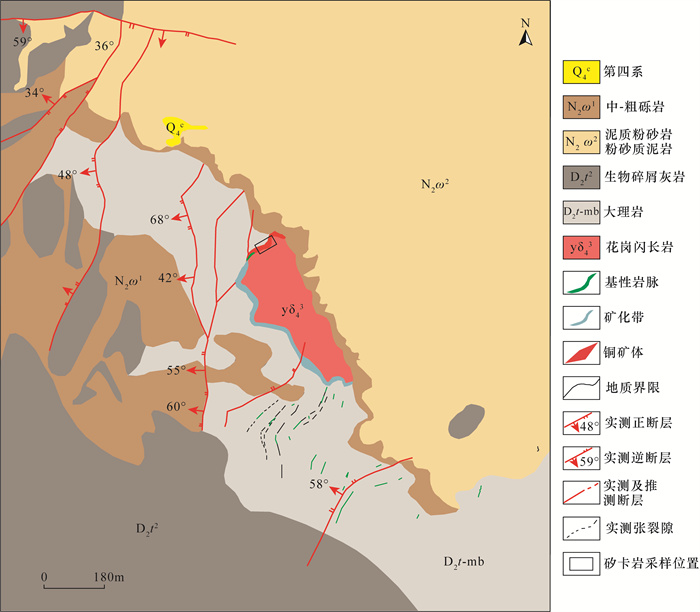
 下载:
下载:
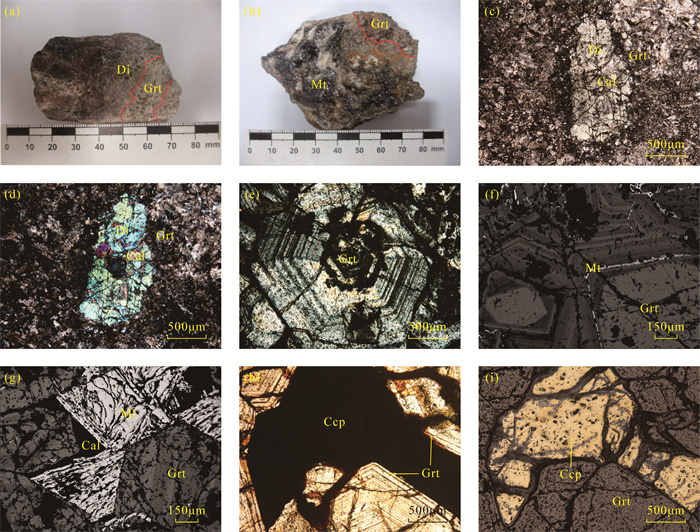
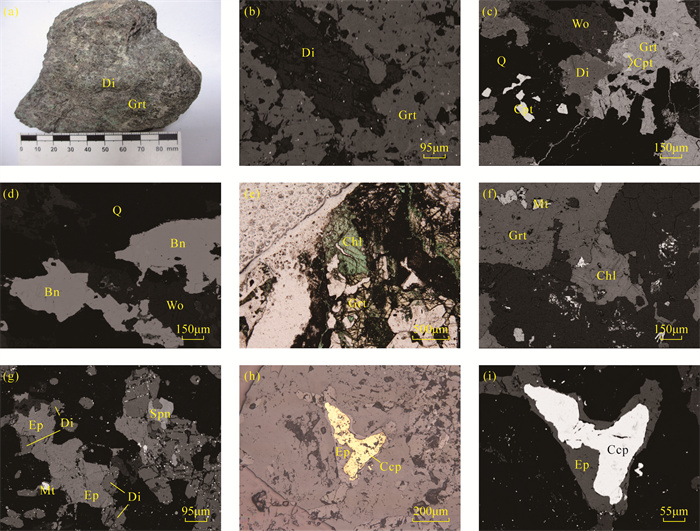
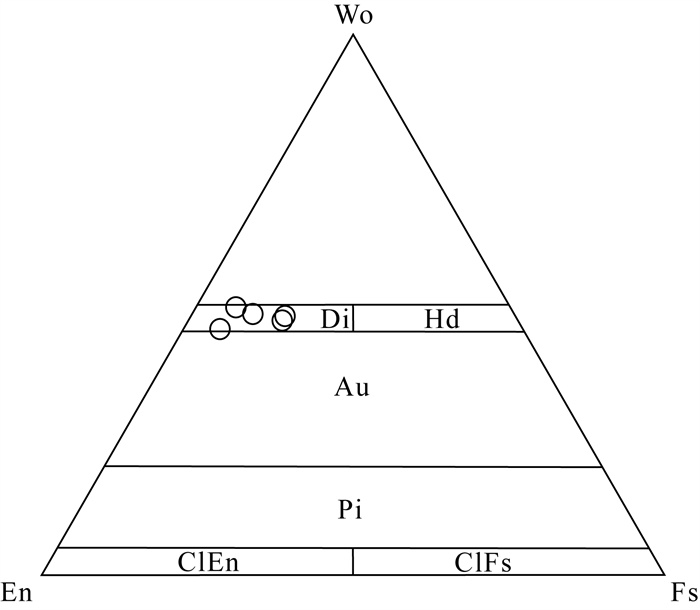
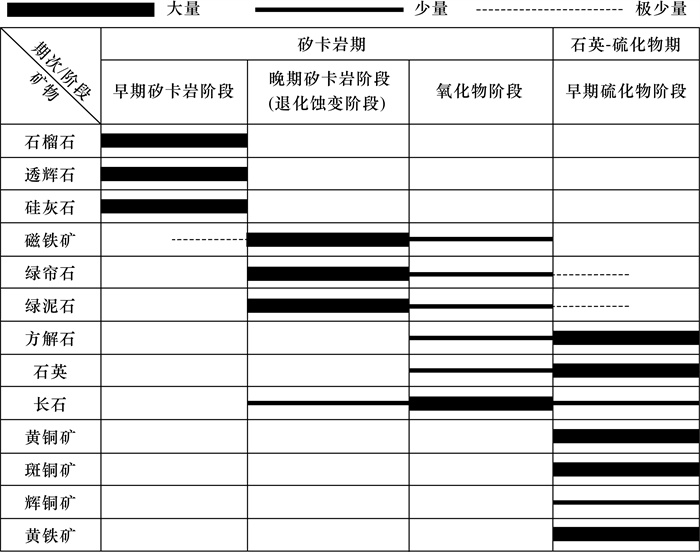
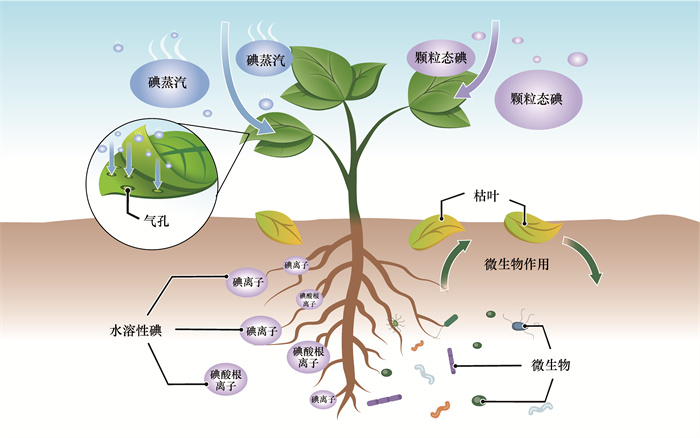
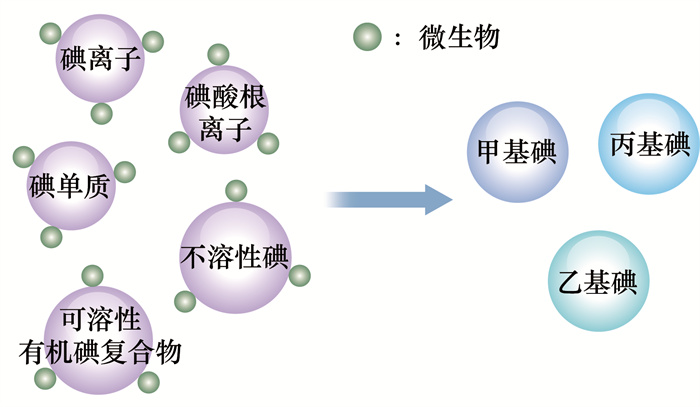
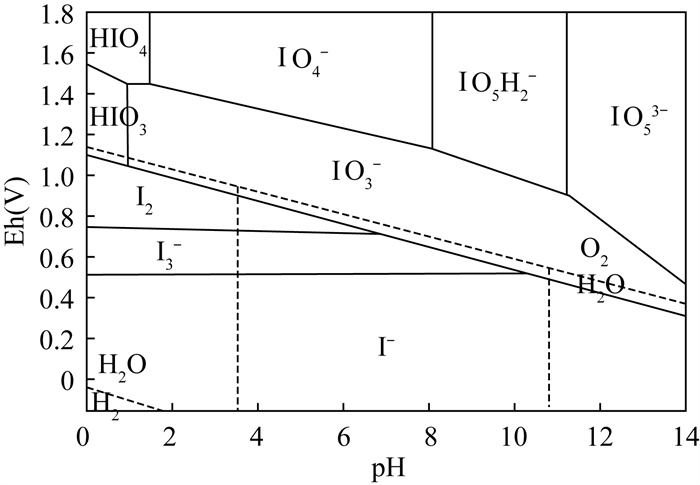
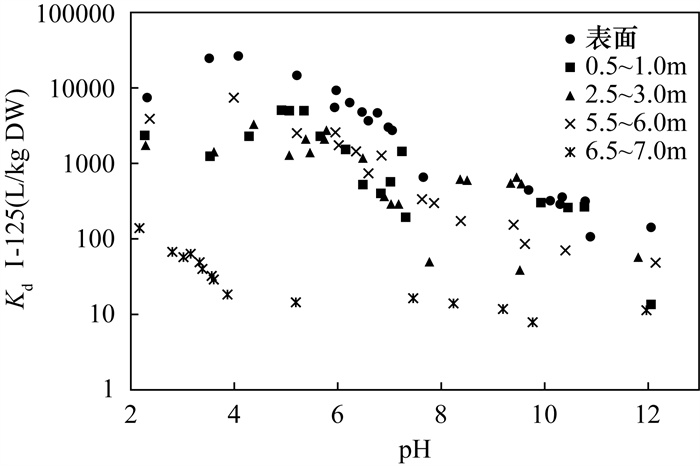
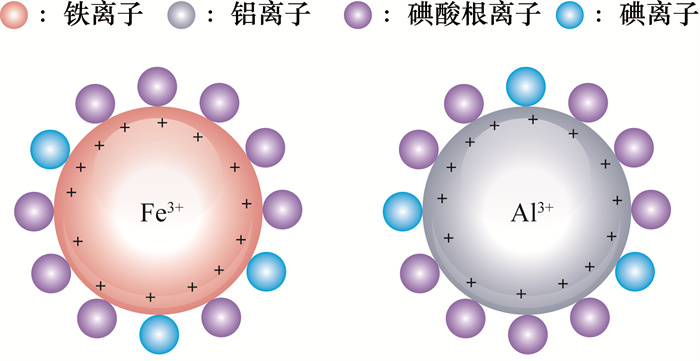
 京公网安备 11010202008159号
京公网安备 11010202008159号